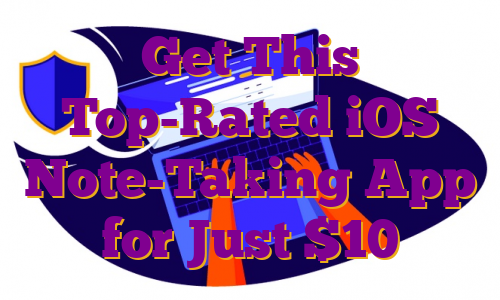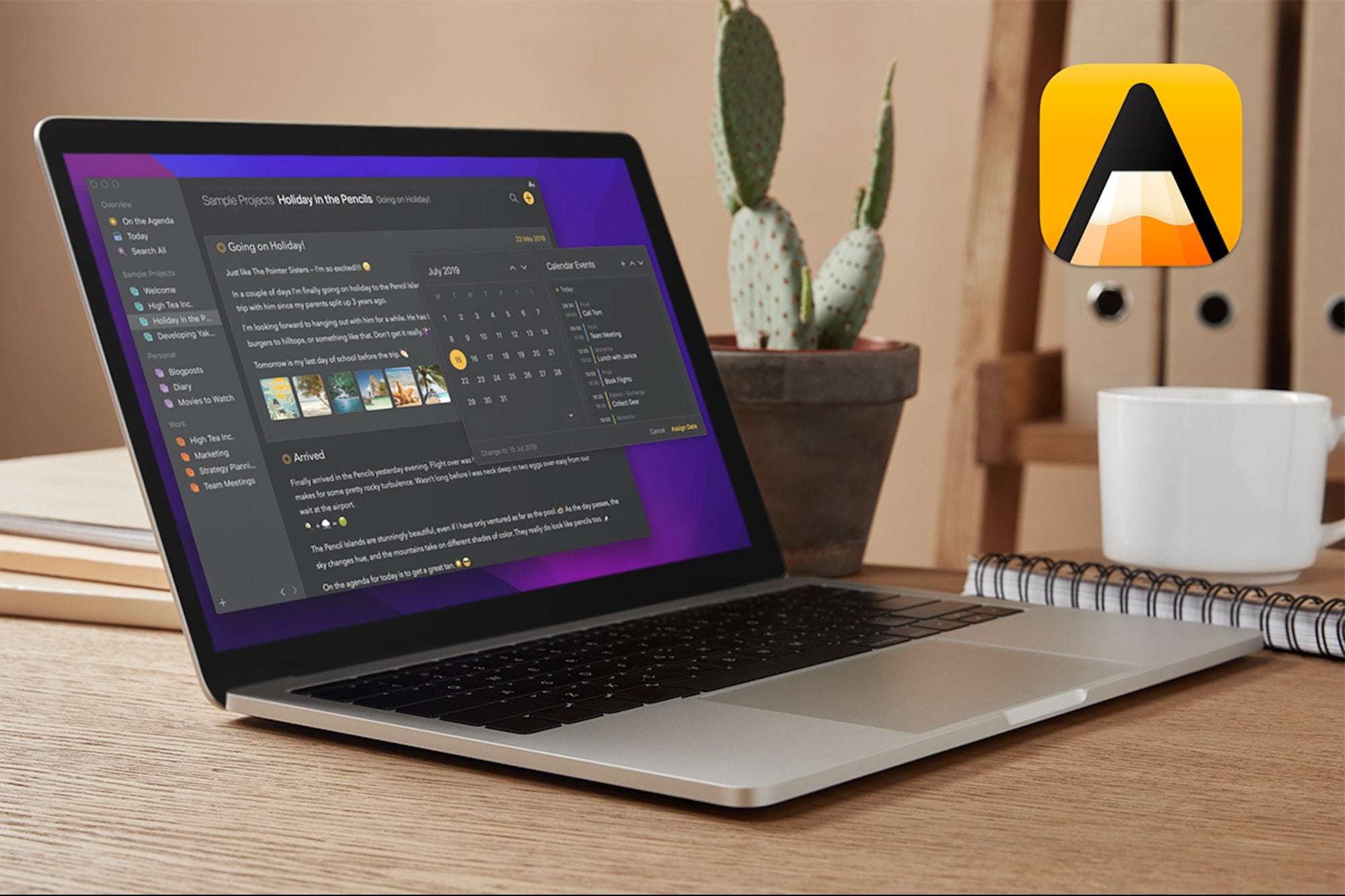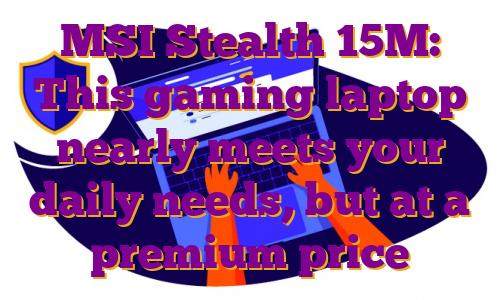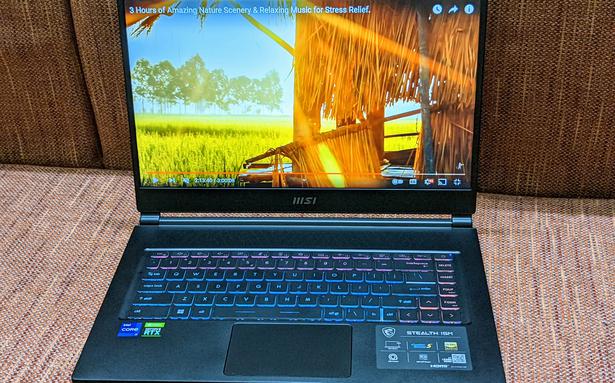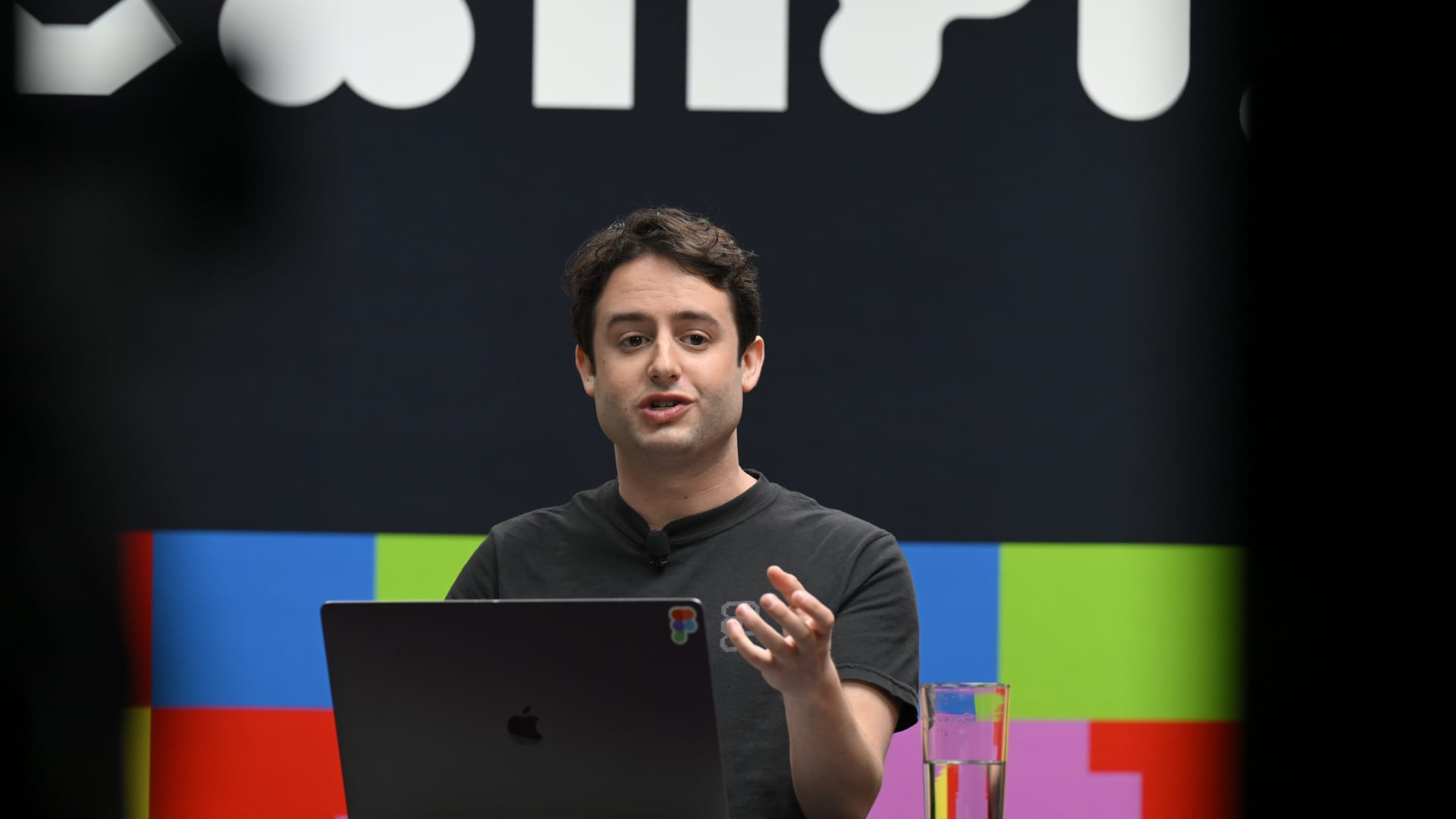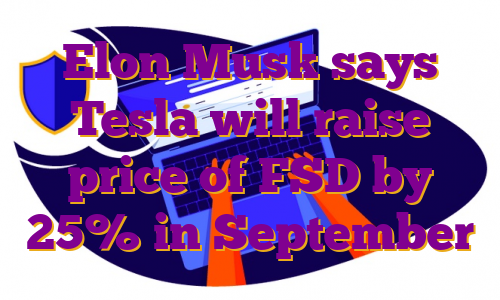Russia has tightened its control over its internet. Authorities have blocked access to Meta-owned Facebook and restricted access to Twitter.Nurphoto | Getty ImagesRussians are turning to virtual private networks to bypass the country’s tightening internet controls following the invasion of Ukraine.VPNs can mask an internet user’s identity and location to help them access blocked websites and services.The top 10 VPN apps in Apple’s App Store and Google Play Store in Russia collectively saw nearly 6 million downloads between Feb. 24, the day the invasion began, to March 8, according to data from SensorTower compiled for CNBC.This was up 1,500% when compared with the top 10 VPN apps in the previous 13-day period. Russia’s internet has been subject to censorship for years, though major U.S. platforms like Facebook, Twitter and Google have been freely available, unlike in China where they are completely blocked. These companies however have operated under the threat of being blocked, especially if they host content that is perceived to be critical of the Kremlin.But President Vladimir Putin has looked to tighten his grip on the internet more recently. In 2019, Russia enacted the “sovereign internet” law giving authorities wide-ranging powers to try to disconnect its internet from the rest of the world. At the time, Russia said the law was designed to enhance its protection against cyberattacks.As the invasion continues, Russia is looking to further restrict access to foreign internet platforms. Meta-owned Facebook was blocked on March 4, while access to Twitter is restricted.On March 5, demand for VPNs surged more than 10 fold above the average, according to Top10VPN, a review and data website.”As various companies have begun restricting access to their products in Russia, VPN apps have experienced a surge in adoption in the market as Russian users attempt to bypass these restrictions,” a SensorTower spokesperson told CNBC via email.”The installs of VPN apps will likely continue to climb as restrictions continue ramping up. At the moment, marketplaces such as Apple’s App Store and Google Play are still available — however, that may very well change in the future.”VPN company Surfshark said its weekly sales in Russia increased by 3,500% since Feb. 24, with the most significant spikes recorded on March 5 to March 6 when Facebook was blocked.”Such a rapid surge means that people living in Russia are actively looking for ways to avoid government surveillance and censorship,” a Surfshark spokesperson told CNBC.Meanwhile, Twitter has launched a version of its website on Tor, a service that encrypts internet traffic to help mask the identity of users and prevent surveillance on them.While Russia has moved to block services, a growing list technology companies have decided to suspend operations in the company.This month, Netflix and Apple are among a long list of technology companies that have suspended sales or services in Russia. .
Get This Top-Rated iOS Note-Taking App for Just $10
Disclosure: Our goal is to feature products and services that we think you’ll find interesting and useful. If you purchase them, Entrepreneur may get a small share of the revenue from the sale from our commerce partners.
There are too many meetings. And when you have too many meetings, it becomes difficult to take notes on the most important things, which creates a domino effect with your workload. How can you stay organized and productive when you’re always thinking about what’s coming in the future and what happened in the past, rather than focusing on the present? It’s really difficult.
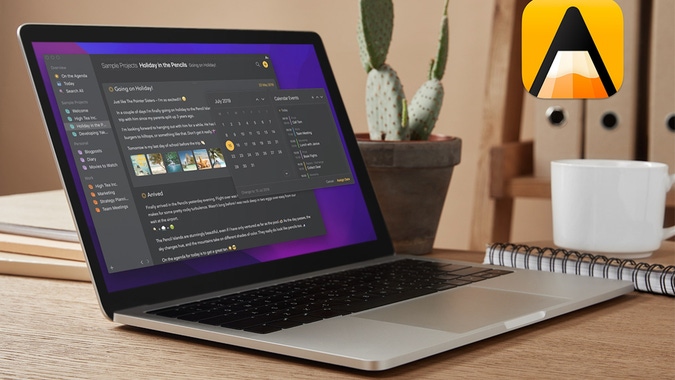
Agenda
With a supercharged note-taking app like Agenda Premium 14, you can plan and document projects and stay in the present. This app works for macOS, iPadOS, and iOS, giving you a date-focused picture of the past, present, and future of all of your projects.Agenda Premium is the only note-taking app that focuses on the passage of time. Whether you’re a project manager who needs to look into different projects’ stages quickly or you’d just like to jot down recipes to make in your free time, Agenda Premium provides custom tools and timelines to better organize your life. You can sync notes between devices via iCloud or Dropbox, link notes to events in your Calendar and Reminder apps, and much more.Every note in Agenda offers beautiful styles and features like images, tables, file attachments, tags, lists, and links so you can truly make them your own. Finding notes is a breeze thanks to a powerful search bar, a project jump bar, and a related notes list so you can always find what you’re looking for, and then have the ability to make your notes action-oriented.Find out why Agenda Premium 14 has earned 4.7/5 stars on more than 3,000 App Store ratings. For a limited time, you can get this top-rated app for 71 percent off $31 at just $9.99. That’s a small price to pay for the benefits of getting organized.Prices are subject to change.
.
MSI Stealth 15M: This gaming laptop nearly meets your daily needs, but at a premium price
The MSI Stealth 15M has plenty of features to offer both gamers and non-gamers, but its extremely short battery life is a tough compromise
The MSI Stealth 15M has plenty of features to offer both gamers and non-gamers, but its extremely short battery life is a tough compromise
Our jobs and lives require us to play the roles of multiple experts with ease, so naturally, we expect our laptops to do exactly the same. A gaming laptop isn’t just for those who know the world of Assassin’s Creed better than their own, but also the gamer who needs to build a multimedia presentation for work on short notice, the gamer who is editing their holiday photos for Instagram, the gamer watching a lush nature documentary as they wait to board their next flight, and the gamer’s child who is attending an online class. MSI knows this well and the company’s laptops are reputed for not just a superior gaming experience, but all-round excellence while being relatively budget friendly in its segment.These were the points we kept in mind while reviewing the MSI Stealth 15M, a gaming laptop priced at Rs 1,62,990. Did the device do justice to its price tag? Here’s what we discovered.(Sign up to our Technology newsletter, Today’s Cache, for insights on emerging themes at the intersection of technology, business and policy. Click here to subscribe for free.)
Design
After you battle your way through layers of sturdy packaging to see the MSI Stealth 15M and its 15.6 inch full HD LCD screen, you know you are in for an immersive experience. We were given the Core Black model to review, with spectrum keyboard lighting where the default colours are neon pink, blue, and orange. The laptop is very sleek by gaming laptop standards and almost light enough for some to use it single-handed. The MSI Stealth 15M is far from generic though, as the unmistakable dragon logo and the company name are placed in iridescent lettering on a slightly raised bar, giving the device an iconic and rebellious look. Thanks to the laptop’s flexible hinged design, it can be splayed flat on a table and used while standing. However, the metal body is prone to getting stained with finger smudges and prints. What’s more, the monitor tends to shake slightly when placed under a fan running at high speed.The laptop arrived with a chunky charging cord and AC/DC adaptor.
MSI Stealth 15M: Nearly meets your daily needs, but at a premium price
| Photo Credit: Sahana Venugopal
Display and Camera
The MSI Stealth 15M’s generous display size and thin bezels meant many hours were lost playing games, watching music videos, and editing media. With a 144hz refresh rate, gamers should have been able to lose themselves in their favourite universe. However, a session of Destiny 2 was rudely interrupted by a pop-up announcing that there were too many low framerates and that the player needed to reduce the graphics quality settings. This stung when considering the laptop’s price, which makes it a premium product for Indian buyers. When these glitches don’t happen, however, the RTX 3060 graphics card makes gaming a vivid experience even in low-light scenes.Compared to the MacBook Air’s Retina Display, pixels on the MSI Stealth 15M were more visible and they distorted the clarity of icons. The display resolution is 1920 x 1080 pixels, which is fair, but could have been higher for a better user experience overall.Furthermore, there was a drastic difference in how the laptop display handled colours. Contrasts are lower, and the MSI Stealth 15M washes out bold reds to a shade of dark orange instead. The 45% NTSC IPS rating means this laptop isn’t the best fit for those editing photos, videos, or colour sensitive graphics.
MSI Stealth 15M: Nearly meets your daily needs, but at a premium price
| Photo Credit: Sahana Venugopal
On the other hand, the MSI Stealth 15M’s webcam beautifully captures human skin textures, colours, and uneven lighting, which should appeal to those making video calls during the day and streaming at night.Though the laptop’s bezels are thin, they do protrude a little and are unevenly sized on the top and bottom, giving the laptop a widescreen but clunky look.
Battery
The real shock emerged when we experienced just how quickly the battery drains on the MSI Stealth 15M.The total battery life is about one hour or even less when gaming. While playing Destiny 2 and riding the high of shooting down enemy aliens, the laptop abruptly shut down. This will not do for hardcore gamers or streamers.However, battery life is sketchy even while completing basic tasks. When the laptop was 100% charged, I watched less than 10 YouTube videos, began composing an email, and then left the laptop to sleep for about 2 hours before taking it up again. In this time, 30% of the battery had been depleted. The same thing happened several more times on different days. Needless to say, this was far from what one expects with the MSI Stealth 15M’s 3 cell, 53.8Whr battery. Those on the move or gamers hoping to use the MSI Stealth 15M as a work laptop will definitely not be able to get much done without their charger.
Performance
The device comes with the Windows 11 Home Advanced OS and an Alder Lake i7-1280P CPU. The 1 TB storage space is more than enough for most gamers while there is 16GB of memory. The CPU speed could have been faster, as games took a long time to load. However, editing photos and media with desktop settings was a smooth experience and there was no lag here. Internet browsing and loading webpages was also impressively fast thanks to the Intel Wi-Fi 6 WLAN. The game downloading experience was quick and easy.One feature where the MSI Stealth 15M wins hands down is its Nahimic audio settings, which let the user meticulously customise their listening experience depending on the kind of media they are experiencing and the audio devices they have on hand. Packed with music, movie, communication, gaming, and smart modes, as well as adjustable surround sound and bass controls, the laptop is perfect for users who have specific auditory needs, users who need true-to-life sound, or just those who love blasting their bass. Yet this only applies to users with headphones and earphones. The external speakers produced a muffled sound that wasn’t clean or bright enough.There is a soft and constant whirring sound when using the laptop, but the device remains warm enough to comfortably place on your lap, even while gaming for short periods of time. Aggressive shooting and running can heat up the keys. However, the laptop is never unbearably hot as the cooling fans are efficient in their work.
Touchpad and Keypad
The MSI Stealth 15M’s keyboard was a delight to use, as the soft, sensitive keys are close to noiseless and give the user a seamless experience whether they’re racing into virtual battle or quickly typing up an essay. With a soothing travel and very subtle bounce, the keyboard is a definite plus point for both gamers and content creators.On the other hand, the laptop’s touchpad disappoints as it is small when compared to the device’s generous size, and is often slow to respond. A considerable amount of pressure is needed to drag windows and media around the screen, which will be a nuisance for photo and video editors.
Verdict
The MSI Stealth 15M isn’t just for the gamers among us (pun intended) as it is ready to support a wide range of use cases with its immersive screen, Nahimic audio features, enhanced keyboard, and lightweight body. However, the device’s extremely short battery life will be a tough compromise for most and it’s hard to swallow slow loading speeds, relatively lower display quality, muddy speaker sounds, and a request for lower intensity graphics in the middle of a game – especially when considering the device’s premium price. .
Figma growing inside Microsoft, testing longtime deal with Adobe
Dylan Field, co-founder and CEO of Figma, speaks at the startup’s Config conference in San Francisco on May 10, 2022.FigmaMicrosoft and Adobe have been friendly bedfellows for decades. Microsoft’s dominant PC operating system has been the gateway for Adobe to reach millions of business users with its design software.The companies’ CEOs even attended the same high school in India, and both moved to the U.S. in the 1980s for graduate school in computer science. They share a common bond over the successful transition from desktop software to the cloud.But inside Microsoft, an emerging challenge to Adobe is catching fire and raising questions about the future of one of the tech industry’s most intimate relationships.Figma, a San Francisco-based startup that celebrated its 10th anniversary in August, is being used by tens of thousands of employees inside Microsoft and, for many, is at the heart of their daily work. The number of users has steadily increased in recent years, though neither company will say how many of them are editors with paid accounts.The cloud-based design software came in the door in 2016, when Microsoft acquired mobile app development platform Xamarin and brought in a 350-person team that, months after the deal closed, would become Figma power users. The product has since become so central to how Microsoft’s designers do their jobs that Jon Friedman, corporate vice president of design and research, said Figma is “like air and water for us.” It’s also used by engineers, marketers and data scientists across Microsoft.”Figma’s become, I would say, sort of the No. 1 common tool we use to collaborate across all of the design community in the community and beyond,” said Friedman, who’s worked at Microsoft for over 18 years. It’s “really great at helping us collaborate at scale, and at global scale. I can collaborate with teams we have in India, China, Europe, Israel and Africa.”Venture investors have been all in on the growth.In June 2021, during the heyday of mega financings, Figma was valued at $10 billion in a funding round that included participation from Morgan Stanley’s Counterpoint Global. That was before the 2022 market plunge sent many cloud stocks down by more than half and largely halted pre-IPO rounds.Figma hasn’t announced plans for a stock market debut, and shareholders aren’t pressing for one anytime soon, in large part because the market for new offerings has dried up this year.The company, backed by the likes of Index Ventures, Greylock Partners and Kleiner Perkins, now has the size and growth trajectory to land solidly on the radar of public investors. Annualized recurring revenue has more than doubled in consecutive years and is poised to top $400 million in 2022, according to people with knowledge of the company’s financials who asked not to be named because the numbers are confidential. Figma’s workforce has swelled to 800.While Microsoft has served as a growth driver for Figma, spending millions a year on its deployment, the company’s software has also taken off at Google, Oracle and Salesforce, where it started small and grew organically as fans touted it to their colleagues. Other customers include Airbnb, Dropbox, Herman Miller, Stripe and Twitter.After Figma founder and CEO Dylan Field tweeted earlier this month about the company turning 10 years old, he received flattering responses from Salesforce co-CEO Bret Taylor and Atlassian co-CEO Mike Cannon-Brookes. Taylor started his response with, “I [heart emoji] Figma.”For Figma, getting traction inside big companies, particularly within Microsoft, has required going head-to-head with Adobe’s competing XD program, and winning its fair share of deals. That doesn’t mean the market has completely flipped, or that Adobe is being fully supplanted.”We’re still heavy on Adobe Illustrator, Photoshop and XD,” Friedman said. Adobe and Microsoft have worked together for more than two decades. In addition to Adobe gaining ubiquity by distributing across Windows machines, the two companies have been syncing their products in desktop, cloud and mobile computing, with over 50 integrations listed on Microsoft’s website.Penetrating that alliance has not always been smooth for Figma. In 2016, Microsoft acquired Sunrise, a startup with a popular calendar app. The Sunrise team relied on Figma and continued to use it after the deal closed.Sunrise co-founder Jeremy Le Van said his employees were among the lucky ones at Microsoft. He said some Microsoft staffers weren’t able to use Figma because of the business relationship with Adobe and were stuck using products such as Photoshop and XD. Despite executive resistance in certain departments, some designers snuck out of the Adobe ecosystem to use Figma anyway, said Le Van, who stayed on as a design director at Microsoft until 2018.Friedman said he wasn’t aware of examples of Figma being shut out. “We have a great relationship with Adobe as well and love their products for many use cases at Microsoft,” he said.The same year of the Sunrise deal, Adobe said it would make Microsoft’s Azure its preferred cloud for Creative Cloud, as well as the Marketing Cloud and Document Cloud. To mark the occasion, Microsoft CEO Satya Nadella and Adobe CEO Shantanu Narayen, who both went to high school at India’s Hyderabad Public School, appeared at Microsoft’s Ignite conference for IT professionals under a banner declaring that Adobe loves Azure.’We both wanted it’Figma’s collaborative capabilities are central to its popularity. Multiple editors of a document can see one another working in real time, and non-editors can view designs and leave comments. Companies pay for Figma based on the number of editors they have for their files.”Any designer, product manager or engineer can jump in and see the design system at play in any particular product,” Friedman said.Last week, Figma released a version of its service that people can use in Microsoft’s Teams communication app, removing the need to open a browser tab.”We both wanted it,” said Field, who started Figma after scoring a Thiel Fellowship, which came with a $100,000 grant from venture investor Peter Thiel on the condition that he drop out of college (Brown University) and pursue a new project.The Teams integration is a tool that benefits any user of Microsoft products, not just employees. Adobe, which offers Teams apps for Acrobat and Creative Cloud, knows all about the power of tying into the Microsoft ecosystem. It’s been a big part of the company’s success in its 40-year run up to almost $17 billion in annual revenue.Figma had to start small. Like many organizations, Microsoft began using it for free. Today, a customer can pay Figma each month based on the number of people who make changes to files, while a more limited version of the service is available at no cost.In 2017, a year after the Xamarin acquisition, Field hosted Friedman at his company’s San Francisco headquarters. Field says he remembers asking Friedman why Microsoft didn’t want to keep using the free version of Figma.”‘Look, we’re all worried you’re going to die as a company,” Field recalled Friedman telling him. “We can’t spread it inside Microsoft as a company even though we like it, because you’re not charging.”It wasn’t just about keeping Figma alive. As a big-spending customer, Microsoft was in position to start asking for more features.A workspace inside Building 21 at the Microsoft campus in Redmond, Washington, on March 3, 2022. Microsoft Corp. has begun calling employees back to its headquarters in recent weeks, but its return-to-office strategy hinges on hybrid work.Chona Kasinger | Bloomberg | Getty ImagesField said Microsoft’s feedback led to several improvements. For example, Figma engineers worked to make it easier to move from screen to screen in a single Figma file. The company also added support for input from Xbox game controllers and made prototype previews work faster on mobile devices.Ultimately, Microsoft’s requests helped Figma develop its top-tier enterprise plan, Field said, adding to the free version and paid monthly premium packages that range from $12 to $45 per editor per month. The enterprise package runs at $75 per editor and includes dedicated account managers and advanced password management.Václav Vančura remembers when things were very different.Vančura was a senior designer at Xamarin, whose software helped companies build Android and iOS apps with Microsoft’s C# programming language.When Figma announced its launch in late 2015, Vančura was impressed with the company’s idea for shared design component libraries. He signed up for a preview release and received access in the summer of 2016. He encouraged his colleagues to jump on board, starting with David Siegel, Xamarin’s head of design.Vančura and Siegel encountered snags while sharing files from design competitor Sketch. After one Xamarin employee uploaded a file to a Dropbox folder, their teammates sometimes struggled to get it running on their computers, either because they didn’t have the right fonts installed or because they had different versions of the software.Unlike Sketch, which was only available on MacOS, Figma was on the browser. That meant fewer sharing issues. You grant others access by copying a link or entering their email addresses, just like in Google Docs. But performance was a problem.Vančura made complex designs in Figma, causing the software to slow down, freeze and crash. The Xamarin workers sent Vančura’s files to Figma engineers, who made Figma speedier and more stable.In 2017, Vančura flew from the Czech Republic, where he lives, to Seattle, and then made the short trek to Microsoft’s headquarters in Redmond. He took the opportunity to show Figma to his team, many of whom were accustomed to working in Photoshop and Illustrator.”It was amazing. It was like watching Formula 1,” Vančura said. “There were so many mouse pointers on the screen, and everybody designed something, even if it meant they were pasting GIFs or drawing rectangles. All of them were so blown away. I think that was the moment these people figured out this was a huge time saver.”Gaining tractionSiegel, who had become Microsoft’s head of design for developer services, wanted to get the word out more broadly that Microsoft was evolving and wasn’t stuck to its old isolated ways. In 2018, he posted a manifesto of sorts online.”We use PCs, Macs, Figma, Sketch, GitHub, JavaScript, ZEIT, and other modern tools to design, prototype, and build the future of software development,” Siegel wrote on Xamarin’s website. There was a link to a Figma file that Microsoft employees could open.The website reached the front page of Hacker News, a discussion board for software developers.”This is some incredible self-awareness,” one commenter wrote.Soon after, Benedikt Lehnert, a Microsoft product design director, told Friedman that the company needed everyone on the same program, whether it was Figma or XD. Microsoft chose Figma, Lehnert said.Scott Belsky, chief product officer and executive vice president for Creative Cloud at Adobe and then a venture partner at Benchmark, speaks onstage at the TechCrunch Disrupt conference in San Francisco on Sept. 13, 2016.Steve Jennings | TechCrunch | Getty ImagesVančura said that at Microsoft, “Figma spread across the company so fast that I don’t think Adobe was even able to catch up.”Figma isn’t shy about going up against an industry heavyweight. On its website, Figma says, “Don’t sync to the cloud with Adobe XD. Work in the cloud with Figma.” It asserts that designers are moving away from Adobe’s Creative Cloud bundle, the product that accounts for 59% of Adobe’s revenue.in 2020, Adobe added Figma to the list of competitors it publishes in its annual report.Analysts have raised questions about Figma to Adobe executives on at least three occasions this year. Alex Zukin of Wolfe Research asked during a January fireside chat with Adobe executives Scott Belsky and David Wadhwani if Figma was taking market share.Belsky, Adobe’s product chief and executive vice president for Creative Cloud, didn’t answer the question directly. But he acknowledged that venture capitalists have been funneling money into the space.”It is exciting that VCs see the same thing we’re seeing,” Belsky said. “Five-plus years ago, you didn’t see any material dollars going into the creative tools. I think now everyone sees that.”Belsky said Adobe can take advantage of an opportunity to bring Creative Cloud to the web, which it’s done for Illustrator and Photoshop but not XD, a product that was launched in preview in 2016.An Adobe spokesperson declined to talk about plans for a web version of XD, and said the company will talk about plans for Creative Cloud at its Max conference in October.”We do not see an impact to the Photoshop business resulting from players in the product design category,” the spokesperson said. “We developed and have evolved Adobe XD to address the needs of our core design customers, who are designing marketing experiences for screens, rather than the distinct category of product design and development.”Many challengesStill, the pressure on Adobe is intensifying.In the past three months, Figma’s app for iOS devices has consistently ranked above Adobe XD in the graphics and design section of Apple’s App Store, according to figures from Data.ai, formerly known as App Annie.Wells Fargo analyst Michael Turrin said Figma has potential to expand.”What Figma is trying to create is more of a broader platform that could become more of a system of record within this market, and that’s why I think this could become more important,” he said.Figma isn’t the only upstart in the space making waves. An open-source alternative called Penpot, which can automatically generate the underlying source code for designs people make in the software, is also gaining momentum.Microsoft employees are using Penpot and have contributed to it, said Pablo Ruiz-Muzquiz, who co-founded the project. Of the people who test Penpot, almost 20% are coming from Figma, he said.Penpot’s code lives on GitHub, which Microsoft owns, under an open-source license, allowing people to download the code, modify it and run it on their own servers. That’s not true of Figma, which keeps its own source code private.But Figma is evolving. One job description suggests Figma is considering a significant update to its iPad app that would provide a space to make new designs and not just view or share them.And Figma has been busy expanding its executive ranks. In June, the company promoted Praveer Melwani, its head of business operations and finance, to the finance chief position. The next month, former Deutsche Bank and Goldman Sachs executive Kate DeLeo joined Figma as vice president of investor relations and business operations.As the company marches toward an eventual introduction to Wall Street, getting more out of its relationship with Microsoft presents an opportunity for growth. Expanding the number of ways Figma gets used is one avenue.”It works great as a presentation tool,” Friedman said.Figma probably won’t ever replace Microsoft’s homegrown PowerPoint software or Adobe’s PDF format, but Field said his product boasts distinct advantages. For one, Figma avoids the problem of the non-stop back-and-forth emailing of a presentation by letting people simply share a link.”I’d be surprised if there’s no salespeople at Microsoft that use it. My guess is there’s some,” Field said. “Is it significant? No, probably not.”Not yet, anyway.WATCH: Adobe CEO reacts to Q1 earnings: Our fundamentals continue to be extremely strong .
Elon Musk says Tesla will raise price of FSD by 25% in September
Tesla CEO Elon Musk on Sunday announced a 25% price increase for the company’s premium driver assistance system, which is marketed under the name Full Self-Driving, or FSD. The price will increase to $15,000 from $12,000 on Sept. 5, Musk said in a tweet.Today, Tesla charges customers $12,000 upfront for FSD, or $199 per month on a subscription basis.Musk did not immediately mention an increase in the cost of FSD subscriptions and Tesla did not respond to a request for further information.All new Tesla vehicles come with a standard driver assistance package called Autopilot, which includes features like “Traffic-Aware Cruise Control” and “Autosteer.” These rely on cameras, other sensors, hardware and software to automatically keep a Tesla vehicle centered in its lane and traveling at the speed of surrounding traffic.Tesla’s highest-priced driver assistance option, FSD, includes what the company calls “Traffic and Stop Sign Control” and “Navigate on Autopilot” among its features.These more advanced features are intended to let Tesla cars automatically detect and slow down for traffic signs and signals; navigate from highway on-ramp to off-ramp while engaging turn signals; make lane changes and take exits.Tesla tells drivers to remain attentive and be prepared to take over their cars’ steering and braking at any time while using Autopilot or FSD. Its technology does not make Tesla vehicles autonomous.One Tesla feature called Smart Summon allows drivers to use a smartphone and Tesla mobile app like a remote control to call their car from across a parking lot and slowly drive, without anyone behind the wheel, to where they are standing.While some FSD features are also included in a lower-priced option called Enhanced Autopilot, or EAP, only Tesla customers who buy or subscribe to the premium option can request access to FSD Beta, an experimental version of Tesla’s system.FSD Beta users are supposed to obtain a high “Safety Score” from Tesla to get and maintain access to the system.Tesla’s approach has drawn criticism and regulatory scrutiny from the National Highway Traffic Safety Administration and the California Department of Motor Vehicles alike.Still, the company is forging ahead and doing a limited release of the latest version of FSD Beta, to a relatively small pool of users, Musk also tweeted on Sunday.Earlier, he wrote on Twitter, “There are many major code changes, so this will be an extra cautious rollout. Releasing on 8/20 to ~1000 Tesla owners, then 10.69.1 next week to accommodate feedback & release to ~10k customers, then 10.69.2 week after & release to rest of FSD Beta.”Owners who gain access to FSD Beta are able to send feedback to the company via their cars when the system fails or acts glitchy. Tesla previously said 100,000 drivers had already installed FSD Beta.Tesla is planning to make FSD Beta even more mainstream.At the Tesla 2022 Annual Shareholder Meeting on August 4, Musk said that FSD Beta will be available to anyone who requests it by the end of this year. Here’s a quote from Thomson Financial’s transcript of the meeting: “We’re still tracking very much to have widespread deployment of FSD Beta this year in North America. So I should say basically, FSD will be available to anyone who requests it by the end of this year.”Among those who are receiving the limited-release update this weekend are widely followed social media influencers who sell Tesla merchandise and run ad-supported videos on YouTube channels where they review Tesla’s latest releases and more.Since 2016, the NHTSA has opened 38 probes into collisions that involved a Tesla vehicle where driver assistance systems including Autopilot and more advanced systems were thought to be a factor. Nineteen fatalities were reported as part of those Tesla-involved collisions under investigation.Separately, California’s DMV recently accused Tesla of deceptive marketing practices with regard to the features in its vehicles, and it is conducting a technical review of Tesla’s systems including FSD Beta.Ashok Elluswamy, Tesla’s director of Autopilot software, said on Twitter this weekend that “Autopilot prevents ~40 crashes /day where human drivers mistakenly press the accelerator at 100% instead of the brakes.” Tesla generally does not make data about its systems available to third-party researchers for confirmation of its claims. .



